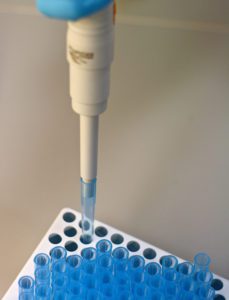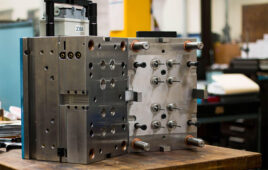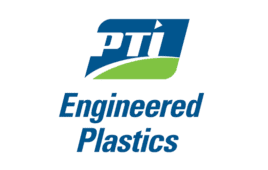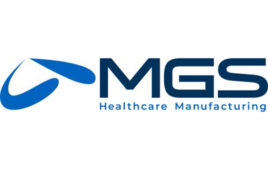 Here are five things you should consider when deciding to use rapid injection molding as part of your development process.
Here are five things you should consider when deciding to use rapid injection molding as part of your development process.
Roger Spurrell, Vaupell Rapid Solutions
A every custom injection molder will tell you, “There’s no such thing as an easy part.” When you add in the need for speed the trade-offs start to multiply, because you are now considering how close the part needs to be to production versus willingness to invest in tooling that might not be production-worthy.
Another factor includes working with supply chain – which ideally wants to qualify vendors that can help you with prototypes and transfer to production. Rapid injection molding is more than just speed and cost; it is about the ability to deliver a part that meets your desired outcome.
With that in mind, here are five things you should consider when deciding to use rapid injection molding as part of your development process.
1. DFM has become DFx
What was traditionally termed “design for manufacturability” (DFM) has evolved into “design for manufacturability, test, clinical evaluation, investor presentations or production readiness” (DFx). In other words, DFx is a comprehensive approach to design that requires consideration of both the product and the business objectives, including reliability, regulatory requirements, cost and supply chain.
To choose the right manufacturing technology to meet your DFx objectives, you must evaluate the cost, timeline and product output capabilities of each technology.
Your development partner should have broad experience with injection molding of medical devices and should be able to conduct design reviews to recommend the best technology for your part. If you go into your DFx process with the bias that the parts needs to be molded, you might not consider alternatives that will meet your desired outcome that could be faster and less expensive.
 2. Materials are important
2. Materials are important
Material selection has an impact on everything from device performance, to testing and sterilization methods, to cost and profitability. When designing a new device, manufacturers often prefer to use materials that they already have biocompatibility data for, since this simplifies the qualification process. In addition, the shrink rate of the chosen material is an important factor that should be considered when determining the manufacturing process for your product.
Coming back to DFx and how it relates to rapid injection molding, you still need to ask whether the product needs to be of the production material. Or can you accept a tradeoff of something that is close enough to quickly meet your user needs, for lower cost.
3. Change is expensive
Design freeze is that mythical place that most “built-to-print” shops are looking for from a designer. But you cannot get to design freeze without building a few parts and, many times during this process, parts that are critical to function need to be built in the exact design and intended material of the final part. Of course, you want to do this inexpensively and have the flexibility to change when design inputs change, without breaking the bank.
One way to reduce the costs associated with changes is to adopt a “steel safe” approach to the mold design. “Steel safe” or “metal safe” refers to the practice of leaving a small amount of extra material on the mold – for example, an inner diameter that should be 0.250 in. might initially be left at 0.255 in. This allows the mold to be modified (removing material is generally easy; adding material is nearly impossible) as the mold and product design are evaluated and “dialed-in.”
4. Validation
There is a lot of complexity to the decision of whether to validate a component or the entire assembly of a device. The decision is risk-based, depending on the criticality of the device and your FMEA (failure modes and effects analysis). It is typically prudent to consider the validation criteria or validation path for your product early in the development process.
If the use of the product does not require validation for component delivery or future use of the same tool, certain trade-offs can speed up the process. As part of the design review, knowing the intended use of components and whether there is budget to build production tools will allow your tool designer to offer trade-offs that reduce cost and speed delivery.
 5. How many parts do you need?
5. How many parts do you need?
We started this article talking about DFx. One of the outputs of the effort should be whether your development project is far enough along to justify investment in injection molding. Injection molds are expensive and increase cost of change.
Understanding how many parts you might need allows your manufacturing partner to suggest tooling investment that is appropriate for the life of the tool and other technologies that might be a better fit.
There is a tipping point with every technology where the total cost of ownership, which includes the tooling and part costs, becomes the limiting factor. Working with a vendor that can offer multiple solutions to meet your goals allows you to see and understand the tradeoffs. Technologies such as machining, cast urethane and 3D printing all have their place in the development of a plastic part based on how many parts you need.
Completing DFx on your project with product intended use and volume is critical in making a manufacturing decision. By having this clear understanding, the options available to meet your needs may expand significantly. One of your goals should be to identify a product development firm that can help you make the right manufacturing choice for your product development needs.
Roger Spurrell has 20 years of experience working with customers to meet their time to market and technical needs for product development. He is currently Senior Program Manager and Tooling Manager at Vaupell Rapid Solutions located in Hudson, N.H.





Danielle, thanks for the post. I learned a lot about injection molding from it. I can see why you said you should consider these five things if you plan on including injection molding as part of your development process.